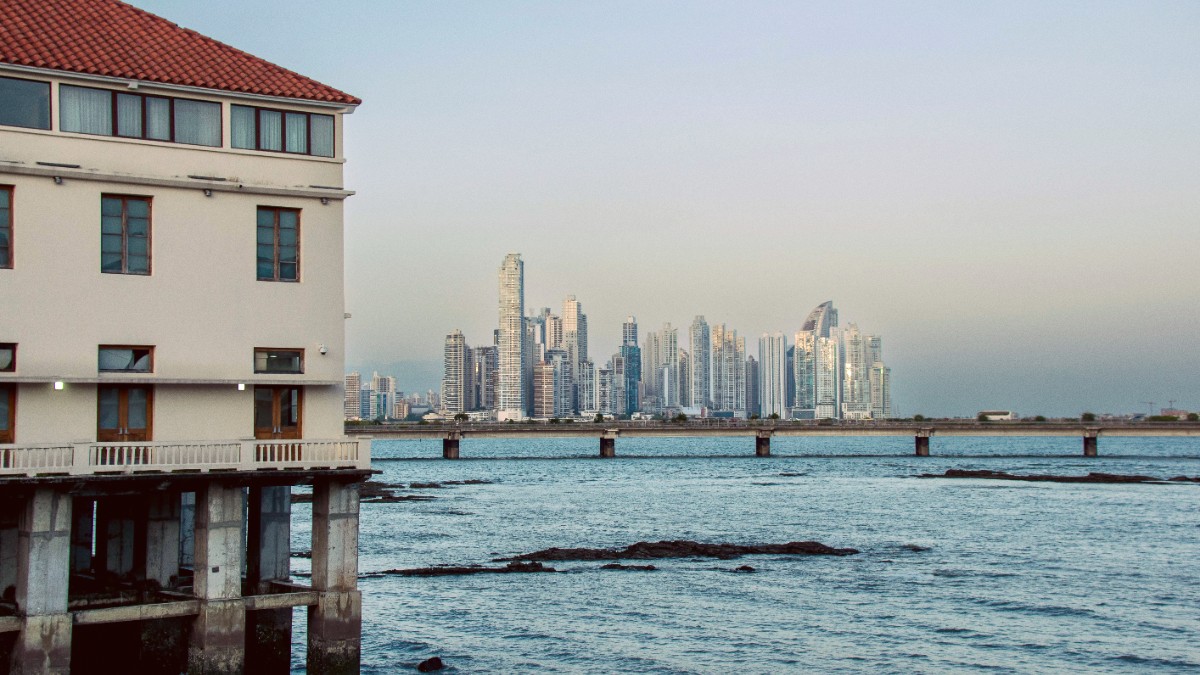
Panama
Panama experiences a tropical climate, with two main seasons determined by rainfall. The country enjoys a position generally protecting it from the most severe tropical storms that affect other parts of the Caribbean.
The dry season (Verano), from December to April, offers the most pleasant weather conditions for visitors. Expect less rainfall, lower humidity levels, and abundant sunshine. Temperatures during the day generally range from 24°C to 32°C (75°F to 90°F). Evenings bring a slight drop in temperature, creating comfortable conditions for outdoor activities and dining.
Panama’s tropical climate influences crowd levels and pricing throughout the year. Choosing your travel dates based on these patterns optimizes your visit.
High Season (Mid-December to April): Minimal rain, abundant sunshine, lower humidity. Ideal for outdoor activities. Higher prices for flights and accommodations, larger crowds at attractions. Shoulder Season (May and November): Transition periods with increasing afternoon showers. More competitive prices, lush green landscapes. Weather is less predictable. Low Season (June to October): Significantly fewer tourists, lower prices. Landscapes are exceptionally lush, wildlife more active. Daily afternoon rains are common; flexibility with itinerary is advisable.
Panama's location offers some protection.
Panama is south of the main hurricane belt; direct hits are extremely rare.
Tropical depressions or distant hurricanes can bring prolonged heavy rainfall during wet season, leading to localized flooding or landslides. Monitor advisories.
View this marvel at any time of year.
Clearer skies, which benefits photography and overall viewing from the ship deck.
Rain is possible, but temperatures are cooler and the sun less intense.
Optimize your outdoor adventures.
Wet season sees more active wildlife due to abundant food and water sources.
Dry season is preferable; trails are less muddy and slippery.
Panama maintains a relatively open visa policy. Citizens of many countries, including the U.S., Canada, UK, EU, Australia, and New Zealand, enter for tourism for up to 180 days without a visa. Other nationalities need a visa. Passport validity must be at least three to six months beyond your planned departure. Immigration officials often ask for proof of an exit ticket from Panama, like an airline ticket, or a bus or boat ticket. You may need to show evidence of sufficient funds (around USD $500 per person) to cover your stay.
Generally, no specific entry fees for tourists upon arrival. At Tocumen International Airport (PTY), proceed to immigration control with your passport and completed form. Panama has no mandatory vaccination requirements for entry for most travelers. Proof of Yellow Fever vaccination is necessary if you arrive from a country with a Yellow Fever transmission risk.
Proof of Yellow Fever vaccination (International Certificate of Vaccination or Prophylaxis).
Always check the latest information with the nearest Panamanian embassy or consulate before travel.
For general tourism, special permits are not typically necessary.
Approximate daily costs per person vary based on personal preferences, exact location, and price fluctuations. Panama uses the US Dollar, simplifying currency matters for many international visitors. No currency exchange is necessary if you are traveling with USD. ATMs are widely available in urban areas.
Accommodation: Around USD $15-25 for a hostel dorm bed. Basic guesthouses around USD $30-40. Meals: Street food and local Fondas (USD $5-10 per meal). Daily meal budget around USD $15-25. Transportation: Public buses (Metrobus) and Metro are inexpensive (USD $0.35-$1.25 per ride). Daily transport costs around USD $5-10. Attractions: Limit paid attractions, focus on free or low-cost activities. Budget USD $5-10 per day for activities. Miraflores Locks Visitor Center is USD $20 for foreigners.
Mid-range Traveler (USD $70 - $150): Accommodation: Mid-range hotels or guesthouses (USD $50-90/night). Meals: Mix of casual and international restaurants (USD $15-30 per meal). Transport: Public transport, taxis, ride-sharing apps (USD $10-25/day). Attractions: Multiple paid attractions, including museums and half-day tours (USD $10-35/day). A partial Canal transit tour is USD $150-250. Luxury Traveler (USD $150+): Accommodation: High-end hotels, boutique properties (USD $100+/night). Meals: Fine dining (USD $40+ per meal, daily budget USD $60+). Transport: Private drivers, pre-arranged transfers (USD $30+/day). Attractions: Comprehensive tours, specialized activities, full Canal transit (over USD $250).
Panama uses the US Dollar, which simplifies currency matters. ATMs are widely available, notably at banks, shopping malls, and major tourist sites, dispensing USD. Credit cards (Visa, MasterCard, American Express) are accepted in most hotels, larger restaurants, upscale shops, and with tour operators.
Panama is generally a safe destination for tourists, especially in well-trafficked areas.
Ensure MMR, DTaP, Polio, and seasonal flu shots are current.
Hepatitis A and Typhoid are recommended for most travelers. Yellow Fever for rural/jungle areas or if arriving from risk countries.
Low malaria risk in city; consider rabies for extensive outdoor or animal contact. Consult a travel clinic.
Prevention is your best defense against health issues.
Mosquito-borne illnesses: Dengue, Zika, and Chikungunya are present. Use Insect repellent with DEET or picaridin, wear Long-sleeved shirts and long pants. Sleep under mosquito nets if screens/AC are absent. Traveler's Diarrhea: Common. Practice good food and water hygiene. Wash hands frequently or use Hand sanitizer. Eat well-cooked food.
Sunburn/Heat Exhaustion: Use High-SPF sunscreen, wear a Wide-brimmed hat and Sunglasses. Stay hydrated with bottled or purified water. Seek shade during peak sun hours.
Offers high-quality private hospitals (e.g., Hospital Punta Pacífica, Hospital Paitilla) comparable to Western standards, often with English-speaking staff.
More basic resources outside Panama City. For serious ailments, travel to Panama City is advisable.
Dial 911 for all emergencies (Police, Fire, Ambulance) in Panama.
Panama City is safe for tourists in well-known areas. Petty crime is the most common concern. Pickpocketing and purse snatching can occur in crowded areas or public transport. Remain vigilant.
Highly recommended: Purchase comprehensive travel insurance before departure. It should cover medical emergencies, emergency medical evacuation, trip cancellation/interruption, baggage loss/delay, and personal liability. Read policy details carefully.
Dial 911 for Police, Fire, Ambulance. Hospital Punta Pacífica: +(507) 204-8000.
Register your travel with your country's embassy. Keep their contact information accessible. U.S. Embassy Panama City: +(507) 317-5000.
Contact your travel insurance emergency line immediately. Carry photocopies or digital images of all important documents separately.